Retirement Accounts: Navigating the Benefits and Rules for a Secure Future
Planning for retirement is an essential part of financial management, and choosing the right retirement account can make a significant difference in achieving your retirement goals. There are various types of retirement accounts available, such as 401(k), IRA, Roth IRA, and others, each with its unique features and benefits. In this article, we’ll explore the different types of retirement accounts and their benefits, so you can make an informed decision about which one is right for you.
Types of Retirement Accounts
Retirement accounts are investment vehicles that allow individuals to save money for their retirement years. There are several types of retirement accounts, each with its own set of rules and benefits.
A 401(k) is a retirement plan offered by employers. It allows employees to contribute pre-tax dollars from their salary into the account. The employer may also contribute to the plan on behalf of the employee.
An Individual Retirement Account IRA is a retirement account that individuals can open on their own. They can contribute pre-tax dollars up to a certain limit each year.
A Roth IRA is similar to a traditional IRA, but contributions are made with after-tax dollars. This means that withdrawals in retirement are tax-free.
Benefits of Retirement Accounts
There are several benefits of retirement accounts. One key benefit of an IRA is the tax advantages that come with it. Retirement accounts can offer significant tax benefits. Contributions to a traditional 401(k) or IRA are made with pre-tax dollars, which reduces your taxable income. Roth IRAs offer tax-free withdrawals in retirement. Contributions to traditional IRAs are tax-deductible, and the earnings grow tax-deferred until withdrawal. Roth IRAs, on the other hand, are funded with after-tax dollars, but the earnings grow tax-free.[1]
Another benefit is IRA’s, is there can be some flexibility in how the inheritor deals with the account when the owner dies.[2] Inheriting an IRA can be tricky, but it’s important to know that all inheritors must take the annual RMD to avoid a penalty. The rules vary depending on the relationship between the inheritor and the original owner. For non-spouse inheritors where the account holder died after 2022, they have a few options, like withdrawing funds within a certain amount of time or create an Inherited IRA using their life expectancy.[3] Spouses who inherit an IRA, where the account holder died after 2022, have the same options, but they can also choose to roll the assets into their own IRA and use their own age to determine RMDs.[4] For Roth IRA’s your options for withdrawals and taxes will depend on your relationship to the original account owner. If you are a spouse or designated beneficiary, you may be able to treat the Roth IRA as your own, which means you can continue to make contributions and take withdrawals according to your needs.[5] However, if you are a non-spouse or designated beneficiary and the original account owner passed away on or after January 1, 2020, the SECURE Act requires most beneficiaries to withdraw all funds within ten years of the original account owner’s death.[6]
Compound interest is another potential advantage of having retirement account. Compound interest is interest calculated on the initial amount of money saved and on the accumulated interest from previous periods.[7] In other words, it is interest that is earned on both the principal amount and the interest earned over time. Since some retirement accounts allow your money to grow tax-free, the interest earned on your contributions is reinvested and added to your principal, resulting in a compounding effect that accelerates your savings growth.[8] In short, compound interest can be powerful tool that helps your retirement account to potentially grow exponentially over time.
Different types of IRAs offer unique benefits.[9] Traditional IRAs are great for those who want to reduce their taxable income now and expect to be in a lower tax bracket in retirement. Roth IRAs are ideal for those who expect to be in a higher tax bracket in retirement or want the flexibility to withdraw their contributions without penalty. SEP and SIMPLE IRAs are designed for small business owners and self-employed individuals, offering higher contribution limits and tax benefits.[10]
Required Minimum Distributions
Retirement accounts are a great way to save for the future and ensure a comfortable retirement. However, most retirement accounts require RMDs, which are annual distributions that you must take from your account once you reach a certain age. Required Minimum Distributions (RMDs) are a crucial aspect of retirement planning for many Americans.[11] RMDs are mandatory withdrawals that IRA and retirement plan account owners must make annually starting at age 72 (or 73 if you reach age 72 after Dec. 31, 2022) for traditional IRAs, SEP IRAs, SIMPLE IRAs, 401(k)s, 403(b)s, and other defined contribution plans. However, Roth IRAs do not require withdrawals until after the owner’s death.[12]
The calculation for RMDs can be complex, but it generally involves dividing your account balance by your life expectancy. The IRS provides tables to help you calculate your RMD, and financial advisors can also assist you in determining the amount you need to withdraw each year.[13]
Understanding the rules and regulations surrounding RMDs and the benefits of different types of IRAs is crucial for retirement planning. By making informed decisions about your retirement savings, you can ensure that you’re on track for a comfortable retirement and avoid penalties. It’s important to consult a tax professional for advice on your specific situation.
Sources
- 1https://www.investopedia.com/articles/financial-advisors/120815/iras-advantages-disadvantages-and-which-one-right-you.asp
- 2https://thekrauseagency.com/iras-retirement-accounts/rmds-and-iras-identifying-options-for-inherited-retirement-accounts/
- 3https://www.schwab.com/ira/inherited-and-custodial-ira/inherited-ira-withdrawal-rules
- 4https://www.schwab.com/ira/inherited-and-custodial-ira/inherited-ira-withdrawal-rules
- 5https://www.schwab.com/ira/inherited-and-custodial-ira/inherited-ira-withdrawal-rules
- 6https://www.fidelity.com/learning-center/personal-finance/retirement/secure-act-inherited-iras
- 7https://www.investopedia.com/articles/personal-finance/040315/why-save-retirement-your-20s.asp
- 8https://www.fidelity.com/learning-center/personal-finance/retirement/continuous-contributions-compounding
- 9https://www.wealthguards.com/blog/managing-your-required-minimum-distributions-rmds-in-retirement
- 10https://money.com/best-self-employed-retirement-plans/
- 11https://www.irs.gov/retirement-plans/retirement-plan-and-ira-required-minimum-distributions-faqs
- 12https://www.investopedia.com/roth-ira-required-minimum-distribution-rmd-4770561
- 13https://smartasset.com/retirement/how-to-calculate-rmd
*Disclaimer:
This article is provided by Fortis Capital Advisors, LLC dba The LRVS Advisory Group for informational purposes only. Investing involves the risk of loss and investors should be prepared to bear potential losses. Past performance may not be indicative of future results and may have been impacted by events and economic conditions that will not prevail in the future. No portion of this article is to be construed as a solicitation to buy or sell a security or the provision of personalized investment, tax, or legal advice. Certain information contained in this report is derived from sources that Fortis Capital Advisors believes to be reliable; however, the Firm does not guarantee the accuracy or timeliness of such information and assumes no liability for any resulting damages.
Any references made regarding the taxable nature of your investments should not be construed as tax advice. Fortis Capital Advisors, LLC is not a tax advisory firm; therefore, any tax decisions or assumptions should be made/verified with your tax professional.
Projected savings presented may vary depending on client longevity, and performance of assets over time.
This article is the sole opinion of this individual and is not indicative of the firm’s belief.
Purshe Kaplan Sterling Investments and Fortis Capital Advisors, LLC dba LRVS Advisory Group are not affiliated companies. This article is provided by Fortis Capital Advisors, LLC dba LRVS (for informational purposes only. Investing involves the risk of loss and investors should be prepared to bear potential losses. Past performance may not be indicative of future results and may have been impacted by events and economic conditions that will not prevail in the future. No portion of this article is to be construed as a solicitation to buy or sell a security or the provision of personalized investment, tax or legal advice. Certain information contained in this report is derived from sources that Fortis Capital Advisors believes to be reliable; however, the Firm does not guarantee the accuracy or timeliness of such information and assumes no liability for any resulting damages.






